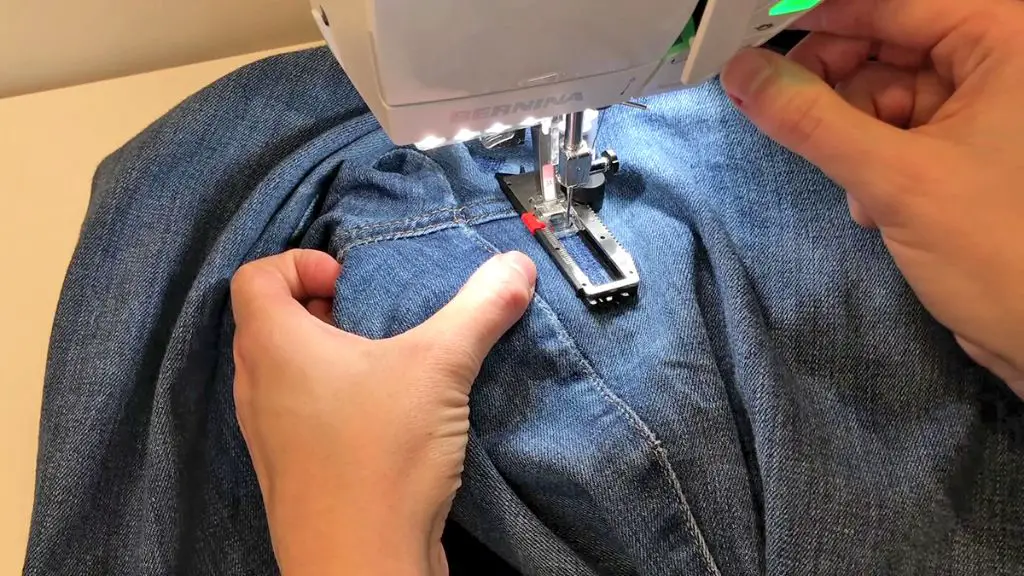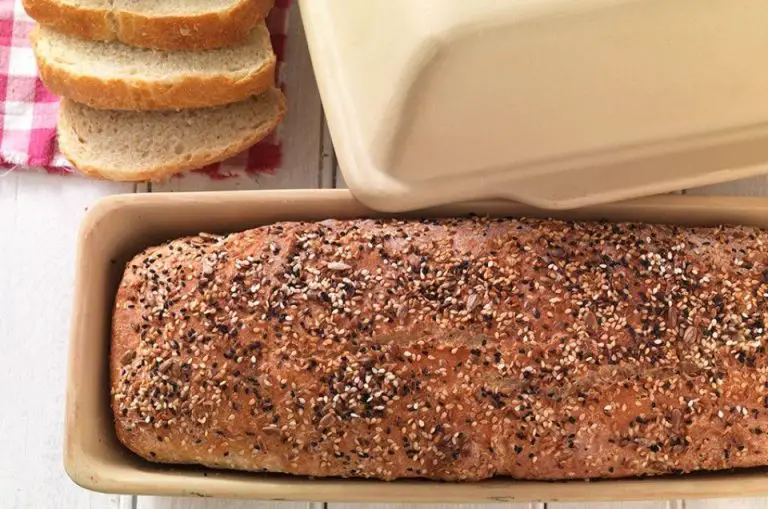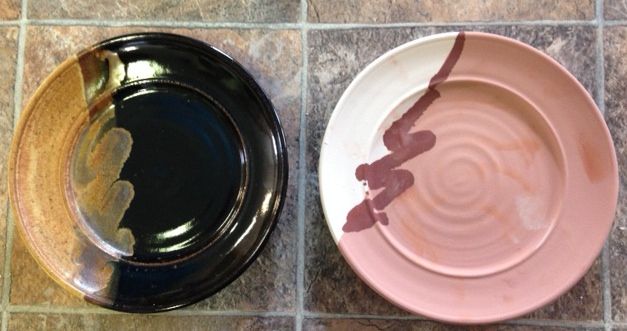How Do You Cover Holes In Jeans?
Fixing holes and tears in denim jeans is a great way to extend the life of your favorite pair of jeans and save money. Denim holes can happen from normal wear and tear, accidents, or overuse. Thankfully, there are many techniques for repairing denim, from simple hand-sewing to using iron-on patches or fabric glue. With a few basic materials and some patience, you can easily mend holes and reinforce thinning fabric in jeans. Learning how to fix denim means you can avoid having to throw jeans away when they get damaged. Repairing a pair of jeans is also an environmentally-friendly alternative to buying new ones. This guide will overview the common techniques and materials for mending holes and tears in denim jeans so you can keep them lasting longer.
Assess the Damage
When assessing damage to your jeans, first look at the size of the hole or tear. Small holes less than 1 inch in diameter can often be repaired through hand sewing or iron-on patches. For larger holes over 2 inches, you may need to use a fabric glue or patch to cover the area. According to https://www.madetoorderjeans.com/blog/denim-damage-causes-repairs-and-prevention/, having a professional tailor assess large damaged areas may be best.
Next, look at the location of the damage. Holes or tears in visible areas like the knees or back pockets will require more care in repairing. You’ll want the fix to be as invisible as possible. Inner seams or hidden areas along the waistband can utilize simpler repair techniques since they aren’t as noticeable.
Finally, identify the type of damage. Simple holes from wear and tear can be patched, while fraying seams or tears may need reinforced stitching. Stains might require bleaching or re-dyeing. Distressed areas may continue deteriorating without intervention. Knowing the specific type of damage will inform the best repair method. Assess each area of damage individually.
Gather Your Materials
The materials you’ll need for repairing holey jeans depends on which method you choose. Here are some of the most common supplies:
- Denim – If the hole or tear is large, you may need extra denim material to patch it. Try to match the color and weight of the original jeans if possible.
- Thread – Select a heavy duty thread in a color that matches the jeans closely. Avoid lightweight thread which can break easily.
- Sewing needle – Use a thick needle suitable for denim, such as a jeans or topstitching needle. Regular fine needles may bend or break.
- Iron-on patches – Look for patches made specifically for denim that feature adhesive on one side to fuse to the fabric.
- Fabric glue – Opt for a flexible glue designed for mending clothes and fabrics.
- Pins, scissors, seam ripper – Have these sewing tools on hand for tasks like pinning patches or removing frayed edges.

You likely already have most of these supplies for basic mending jobs. For more unique repairs, get creative with colorful threads, funky patches, appliques, or embroidery.
Prepare the Area
Before patching the hole in your jeans, you’ll want to prepare the area around the hole to ensure the patch sticks and blends in properly. Start by clipping any loose threads around the hole using a small pair of scissors. This will prevent the threads from getting caught under the patch. Next, clean the area thoroughly to remove any dirt, oil or debris. Use a mild detergent and warm water, carefully scrubbing both the inside and outside of the fabric around the hole. Rinse well and allow to fully dry.
Once cleaned and dried, give the area an iron with no steam, especially if the denim is wrinkled. This will help flatten the surface so the patch can adhere smoothly. Avoid ironing directly on any frayed edges, as the heat can cause them to unravel more. The fabric around the hole should now be clean, smooth and ready for patching.
Hand Sewing
Hand sewing is a classic and convenient way to mend holes and tears in jeans. All you need is a needle, thread, and some basic hand stitching techniques. Hand sewing allows you to closely match thread colors and stitch patterns to blend the mend into the existing fabric.
For basic stitching, use a tight running stitch or backstitch around the edges of the hole to prevent it from getting bigger. Try to stitch into the existing seam allowance or hem whenever possible. Knot the thread securely at the end and trim any excess.
Darning involves weaving new threads into the fabric in a patch-like pattern. Work from the inside of the jeans and stitch over and under the existing vertical and horizontal threads, using matching thread colors as best you can. Build up layers until the hole is filled and secure the thread on the inside when finished.
Embroidery stitches like stem stitch and running stitch can also creatively reinforce damaged areas while adding ornamental details. Consider using contrasting thread colors for a decorative mend and finish off with a few small hand sewn stitches on the outside.
Hand sewing is often the most invisible mending option. With care, holes and tears can be repaired so they practically disappear into the denim. Refer to this hand sewing jeans tutorial for more tips and step-by-step instructions.
Iron-on Patch
One of the easiest ways to cover holes in jeans is with an iron-on patch. Iron-on patches come in a variety of sizes, shapes and designs and can be purchased at craft stores, big box retailers, or online retailers like Amazon.
To apply an iron-on patch:
- Heat up your iron to the heat setting recommended on the patch packaging, usually cotton or linen.
- Place the patch over the hole on the inside of the jeans, making sure to center it properly.
- Place a pressing cloth or scrap piece of fabric over the top of the patch.
- Using firm, even pressure, gently iron the patch for 10-20 seconds. Move the iron around to heat all areas of the patch evenly.
- Allow the patch to cool, then check edges for proper adhesion.
- Reheat the iron if needed and iron for another 10-20 seconds to reinforce the bond.
The key is using the right amount of heat and taking care not to scorch or burn the jeans when ironing on the patch. Follow the package directions closely. Once cooled completely, the patch should hold tightly in place, covering the hole.
Fabric Glue
Fabric glues like Loctite Flexible Fabric Glue (source) are specially formulated for bonding and patching fabrics like denim and cotton. When using fabric glue:
- Apply a thin layer of glue to both surfaces and allow to become tacky for 2-3 minutes before bonding.
- Clamp the tear together tightly with clothespins, keeping the edges as aligned as possible.
- Allow the glue to fully cure for 24-48 hours before wearing or washing the jeans.
The bonded area should remain flexible after drying. Fabric glues create a permanent, machine washable bond while being gentler on fabrics than super glues. They work well for tears and holes in areas that don’t undergo too much stress.
Other Creative Options
If you want to get really creative with repairing holes in your jeans, consider using patches, embroidery, applique and other unique techniques. Not only will these repairs fix the hole, but they can add a fun, artistic flair to your jeans.
Patches are a great way to cover holes of any size. You can buy iron-on patches, or sew fabric patches on by hand or machine. Cut patches into fun shapes like hearts, stars or circles. Use patches that are a different color or print than your jeans for an eye-catching look. Refer to this source for inspiration on creative patch ideas.
Embroidery is perfect for mending smaller holes. You can embroider right over the hole using thread that matches or contrasts with the jeans. Try a simple stitch like running stitch or get creative with flowers, words or patterns. Embellish the area around a hole to highlight your repair work. Consult this tutorial for tips on embroidering holes.
Iron-on appliques, lace, ribbons, bows and other trims can be used to creatively cover damaged areas on jeans. Applique colorful shapes or words using an iron-on adhesive. Sew ribbons, lace and other trims on top of holes by machine or hand. The options are endless for decorating holes to make them a fashion statement!
Caring for the Repair
Once you’ve patched up your jeans, you’ll want to take proper care of the repair so it lasts as long as possible. Follow these tips for washing, drying, and wearing your newly-mended jeans:
Washing – Avoid frequent washing, as too much agitation can be hard on repairs. Levi Strauss recommends washing jeans only once every 10 wears The Definitive Denim Care Guide. When you do wash, use a gentle cycle and cold water. Wash jeans inside-out to protect the repair patch.
Drying – Tumble dry on low if needed, but air drying is best. Lay jeans flat or hang them to maintain shape and minimize stress on the mend. If hang drying, clip jeans at the hem instead of hanging from the waistband.
Wearing – Wear your jeans often to break in the repair. But avoid too much strain on the area, especially at first. Consider wearing a belt to distribute stress if the repair is near a waistband or belt loop.
With proper care, your mended jeans can hold up for years to come. Just be gentle and limit washing to let the patch fully integrate into the fabric.
When to Toss Jeans
There comes a time when it’s best to retire a pair of jeans and replace them with a new pair. Signs that your jeans have reached the end of their lifecycle include:
Unsalvageable holes/tears – If the holes or tears in the jeans are too large or in awkward places that cannot be repaired, it’s time to toss them. Holes larger than a few inches across are likely unsalvageable.
Threadbare – Jeans that are worn so thin in places that they are see-through should be discarded. This level of wear and tear usually cannot be repaired.
Ill-fitting – If your jeans are too loose, too tight, or have lost their shape from stretching out over time, it’s best to replace them with a better fitting pair. Jeans that require constant hitching up or are uncomfortable to wear have served their purpose.
Faded beyond repair – Jeans that are so faded and distressed that the color has been washed out are ready for retirement. Attempting dye or color restoration is unlikely to work well.
According to tips from fashion experts, if your jeans have any of these issues, it’s time to let them go and invest in a new pair that fits well and will be comfortable to wear [1].




